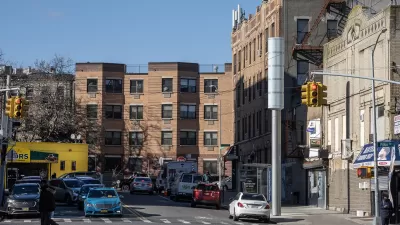Pete Swabey tells the tale of the development of smart city technology by IBM and Cisco, which has now reached a point of maturation in which significant lessons, economic opportunities, and future applications can be discerned.
In only seven years since its initial seed investment, by the Clinton Foundation, smart city technology – "the use of networks, sensors and analytics to make cities more efficient, productive and habitable" - has begun to affect the ways in which cities operate, evidenced by a profile piece by Natasha Singer, in the The New York Times, on Rio's citywide system (developed by IBM) integrating data from some 30 agencies.
While Swabey recounts the larger strategies guiding the tech giants in their quest to corner the expected $57 billion global market to supply cities with "smart" systems by 2014, Singer focuses narrowly on the Rio initiative, IBM's pioneer project and world's most fully integrated smart city application.
Rio's challenges (poverty, sprawl, crime) and opportunities (host to the 2014 World Cup and 2016 Olympics), provides a unique crucible in which to develop and test such technology. Singer describes the system's foundation in IBM's incorporation of hardware, software, analytics and research, and the development of a virtual operations interface. Singer also looks at the system's performance in responding to recent crises such as a 20-story office building collapse.
The Integrated Operations Centre software that IBM developed for the Rio project is now a commercially available product and Zhenjiang, a city of about three million people in eastern China, has already bought the new system to manage public transportation, reports Singer.
FULL STORY: IBM, Cisco and the business of smart cities

Planetizen Federal Action Tracker
A weekly monitor of how Trump’s orders and actions are impacting planners and planning in America.

Restaurant Patios Were a Pandemic Win — Why Were They so Hard to Keep?
Social distancing requirements and changes in travel patterns prompted cities to pilot new uses for street and sidewalk space. Then it got complicated.

Map: Where Senate Republicans Want to Sell Your Public Lands
For public land advocates, the Senate Republicans’ proposal to sell millions of acres of public land in the West is “the biggest fight of their careers.”

Maui's Vacation Rental Debate Turns Ugly
Verbal attacks, misinformation campaigns and fistfights plague a high-stakes debate to convert thousands of vacation rentals into long-term housing.

San Francisco Suspends Traffic Calming Amidst Record Deaths
Citing “a challenging fiscal landscape,” the city will cease the program on the heels of 42 traffic deaths, including 24 pedestrians.

California Homeless Arrests, Citations Spike After Ruling
An investigation reveals that anti-homeless actions increased up to 500% after Grants Pass v. Johnson — even in cities claiming no policy change.
Urban Design for Planners 1: Software Tools
This six-course series explores essential urban design concepts using open source software and equips planners with the tools they need to participate fully in the urban design process.
Planning for Universal Design
Learn the tools for implementing Universal Design in planning regulations.
Heyer Gruel & Associates PA
JM Goldson LLC
Custer County Colorado
City of Camden Redevelopment Agency
City of Astoria
Transportation Research & Education Center (TREC) at Portland State University
Camden Redevelopment Agency
City of Claremont
Municipality of Princeton (NJ)




























